Restoring historic homes can be a rewarding journey, filled with the satisfaction of breathing new life into a piece of history. But where do you start? This blog will guide you through the essential steps, offering simple and engaging insights to help you along the way.

Understanding the Value of Historic Homes
Historic homes embody unique stories and styles that reflect the architectural trends and craftsmanship of their era. Understanding their value is the first step in appreciating their preservation. Many historic homes are not just buildings but artifacts that have witnessed decades of change. They offer insights into past societies, their living conditions, and aesthetic preferences. Homeowners, therefore, play a critical role as guardians of these rich narratives.
Living in a historic home comes with benefits like high-quality craftsmanship and unique character. However, there are challenges, too. These homeowners often face specific maintenance challenges not typically encountered with newer homes. Exploring Resources for Historic Homeowners can offer valuable support and guidance, providing insights into maintenance, grants, and tax credits.
Additionally, the historic designation of a home can increase its resale value and afford homeowners certain tax benefits and financial grants. Ensuring that a home qualifies for these certifications requires understanding both the local architecture and the home’s historical significance. For more about adding value through restoration, check out Contractor Connection.
Assessing the Condition of Your Historic Home
Before restoration begins, assessing the condition of your home is crucial. You need to conduct a thorough assessment to identify structural issues and areas needing repair to plan an effective restoration. Knowing your home’s original features and recognizing later alterations helps guide the restoration process. This evaluation can be essential if you plan to apply for tax credits or grants, as understanding your home’s significant features is a vital step in preparing your plan.
During the assessment, identifying character-defining features is paramount. Elements like original light fixtures or decorative trims contribute significantly to the home’s charm. According to the Wisconsin Historical Society, recognizing these elements can help you decide which features warrant preservation versus those that might be modern enhancements or alterations without historical value. This helps protect the home’s overall architectural and aesthetic integrity.
Planning Your Restoration Project
A well-thought-out plan ensures a smoother restoration process. Consider budgets, timelines, and necessary permits as you outline your restoration journey. Knowing what you want to achieve with the project is essential—whether to restore the home to its original state or adapt it to modern living while preserving its historic elements.
Planning should also involve evaluating your home’s historical significance and any restrictions that might affect the restoration process. This may include architectural styles, the home’s construction period, or any significant events it has witnessed. Connecting with local historians or libraries can illuminate your strategy. Learn more about the Do’s and Don’ts of Historic Home Restoration to ensure an informed plan.
Choosing the Right Materials and Techniques
Selecting materials and techniques that align with the home’s original construction is vital. This not only preserves its character but also enhances its historical authenticity. Wherever possible, opt for salvaging, repurposing, and repairing original materials over replacing them with modern equivalents. This helps maintain the home’s authentic character, something which the Contractor Connection emphasizes for preserving the integrity of historic homes.
Furthermore, utilizing traditional methods and sourcing period-appropriate materials, such as reclaimed wood or handmade bricks, maintains visual and structural integrity. Partnering with suppliers specializing in historic home materials can make these elements more accessible. Seeking advice from preservationists or architectural historians could provide valuable insights on compatibility and long-term durability of selected materials.
Working with Preservation Specialists
Engaging with specialists experienced in historic restoration can provide invaluable insight and guidance, helping you make informed decisions throughout the process. These experts can help identify original features worth preserving and suggest alterations that can enhance functionality while maintaining historical integrity.
The expertise of these specialists is crucial when assessing significant architectural features and understanding local preservation laws. They can offer invaluable help, from navigating legal requirements to selecting appropriate restoration techniques. For further assistance, the Preservation League of New York State offers numerous resources and can connect you with experts in the field.
Balancing Modern Needs with Historical Integrity
Modern amenities can coexist with historical charm through careful design considerations. Striking a balance ensures the home remains functional while retaining its unique character. Subtle upgrades to improve energy efficiency or integrate modern technology can complement historical features without overshadowing them.
It’s essential to engage with designers who specialize in historic home restoration to ensure a sensitive integration of modern conveniences. Keep in mind that spaces should be adaptable to present-day needs without undermining the home’s original charm. As the Wisconsin Historical Society advises, maintaining authenticity while modernizing requires awareness and respect for the home’s heritage.
Embracing the Journey of Historic Home Restoration
Restoring a historic home is more than just a home improvement project; it’s a labour of love that allows you to connect with the past while preserving it for future generations. By understanding and appreciating the unique elements of older homes, you can maintain their heritage and character for years to come, contributing to the history they embody.
Let’s build something exceptional together — start with your
Free ConsultationSeventeen Strategies for Historic Home Restoration
1. What is historic home restoration?
Historic home restoration is the process of returning a historic property to its original design, materials, and features while preserving its architectural and historical significance. This involves careful planning, research, and execution to ensure that the restoration respects the home’s heritage while often accommodating modern needs.
2. Why is preserving historical homes important?
Preserving historical homes helps maintain cultural heritage, telling the story of a community’s architectural and social history. These homes often serve as landmarks and can enhance property values while fostering appreciation for craftsmanship and design from earlier eras.
3. What challenges might I face during a historic home restoration?
Challenges can include sourcing authentic materials, adhering to local preservation regulations, and managing structural issues that may arise due to age or neglect. Additionally, balancing modern amenities with the need to maintain historical integrity can be complex and require innovative solutions.
4. Are there financial incentives for restoring a historic home?
Many local, state, and federal programs offer financial incentives for owners of historic properties, including tax credits, grants, and low-interest loans specifically for restoration projects. It is advisable to research available resources in your area and consult with preservation organizations for guidance.
5. How can I ensure my restoration project preserves the home’s character?
To maintain the home’s character, it is crucial to conduct thorough research on its original features, construction methods, and historical significance. Collaborating with skilled artisans, architects, and contractors experienced in historic preservation can help you make informed decisions. Additionally, using original or period-appropriate materials and respecting the home’s architectural style are vital aspects of the restoration process.
